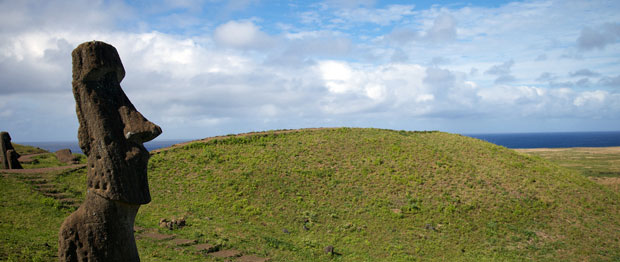4 remote islands for your next getaway

Some people like the hustle of discovering a new city on holiday while others prefer to find a remote island to explore and unwind. Here are four remote island getaways including the least populated island and the most remote island on Earth. If you’re looking for a more typical beach holiday, check out our tips for a Cook Island holiday.
Birder’s paradise on Lord Howe Island
A world Heritage Island of the coast of Australia, Lord Howe Island only allows 400 visitors at a time to prevent damage to the ecosystem. With the southern-most coral reef in the world, Lord Howe’s waters host over 500 species of fish. And on Ball’s Pyramid- a triangle shaped rock formation off the coas—a large stick insect was recently rediscovered.
A birdwatcher’s paradise, Lord Howe is the only home of the endangered woodhen and has more seabird species than anywhere else in Australia. You’ll find opportunities for fish feeding and snorkelling at Ned’s Beach and shelling, surfing and fishing on other beaches.
Accommodations on Lord Howe range from small self-catering apartments to full service lodges. Accommodations start at NZ$65 dollars per night.
Ask locals about the legend of the sea captain and the princess—the first permanent inhabitants of the island.
Archaeological mystery on Easter Island
Rapa Nui or Easter Island, 3600 km off the Chilean coast, is a remote island with a lasting mystery. The island is home to over 850 statues, known as moai, created between 1250 and 1500. The larges is 10 metres tall and weighs 82 tons. Each one is unique and all face inland.
Despite its remote location, Rapa Nui is relatively easy to get to. LAN Airlines has direct flights from Santiago, Chile several times each week.
Rapa Nui boasts several new eco-lodges made from local materials and offer great views. Like most islands, the food isn’t cheap, but the cuisine is a great Chilean-Polynesian blend that is unique.
In February of each year, the Tapati Festival celebrates the island’s heritage with dancing, art exhibits and a sports competition based on traditional activities like tobogganing down the side of a mountain on a banana log. Last man riding wins.
Mutineer’s refuge on Pitcairn Island
Most people are familiar with Pitcairn Island from the story of Mutiny on the Bounty. Most of the island’s residents are still descended from those sailors who sought refuge after running aground. Pitcairn became a British colony in 1838 and is still a British overseas territory—the last in the Pacific.
In early 2015, the British government established the largest continuous marine protect area in the world around Pitcairn.
The easiest way to visit Pitcairn is on a cruise that calls at the island or by sailing on the MV Claymore to the island and enjoying a several day stay with a family.
Most remote place on earth on Tristan da Cunha
If you haven’t heard of Tristan da Cunha in the South Atlantic, you’re not alone. It’s the most remote inhabited island in the world. The nearest inhabited island is 2,000 km away.
A British overseas territory, Tristan da Cunha has a permanent population of around 300 people. All land is communally owned and the main income is from farming, fishing and the sale of postage stamps to collectors.
The island can be reached only by boat from Cape Town, South Africa-a journey that takes five or six days. Return tickets start at NZ$1160. You need to write to the Island Council ([email protected]) in advance for permission to visit. There are six guest houses on the island as well as home stays available.
As you plan your remote island getaway, be sure to get a quote to cover your trip with travel insurance.
Image courtesy of Flickr user Nicolas de Camaret; cropped from original